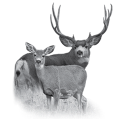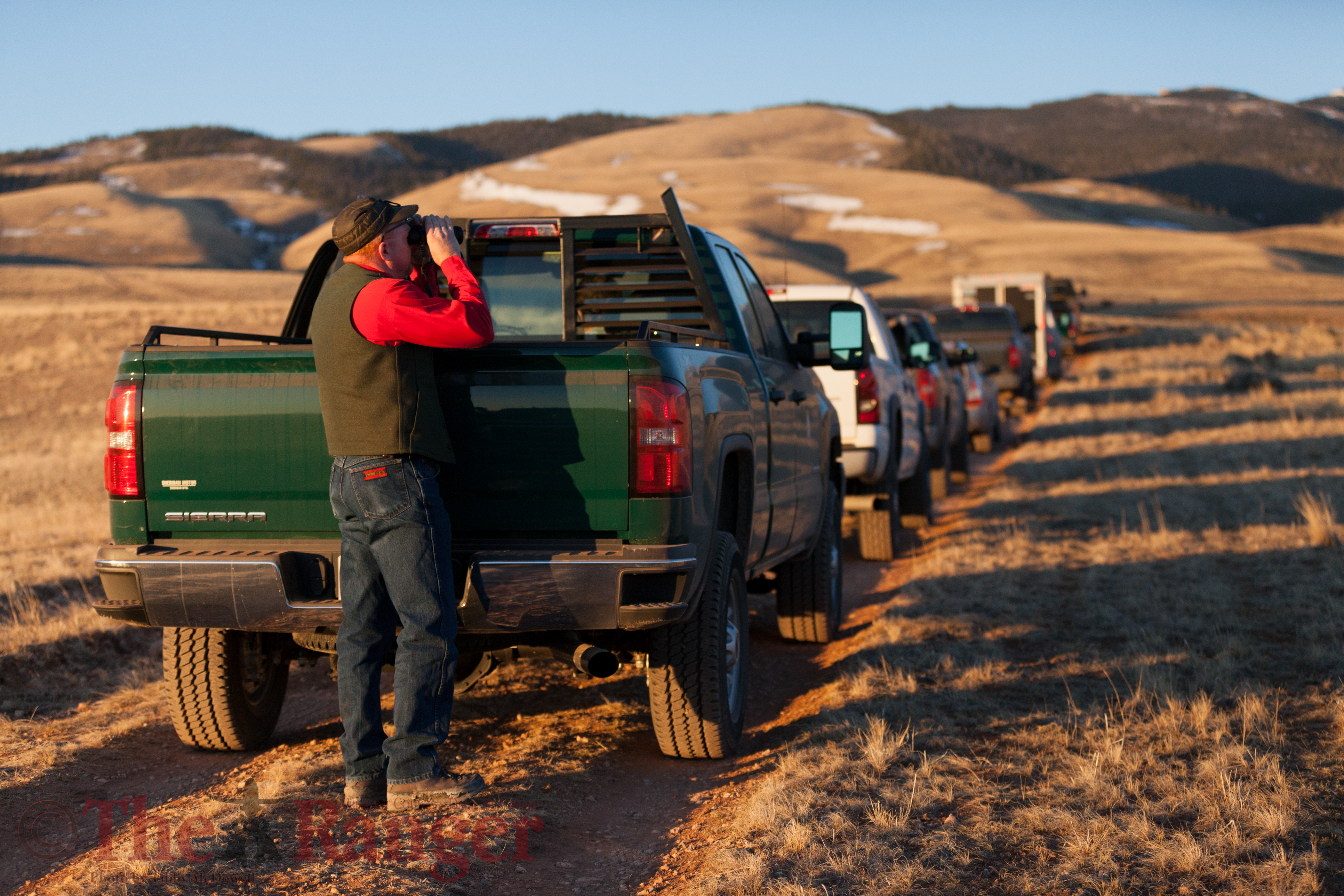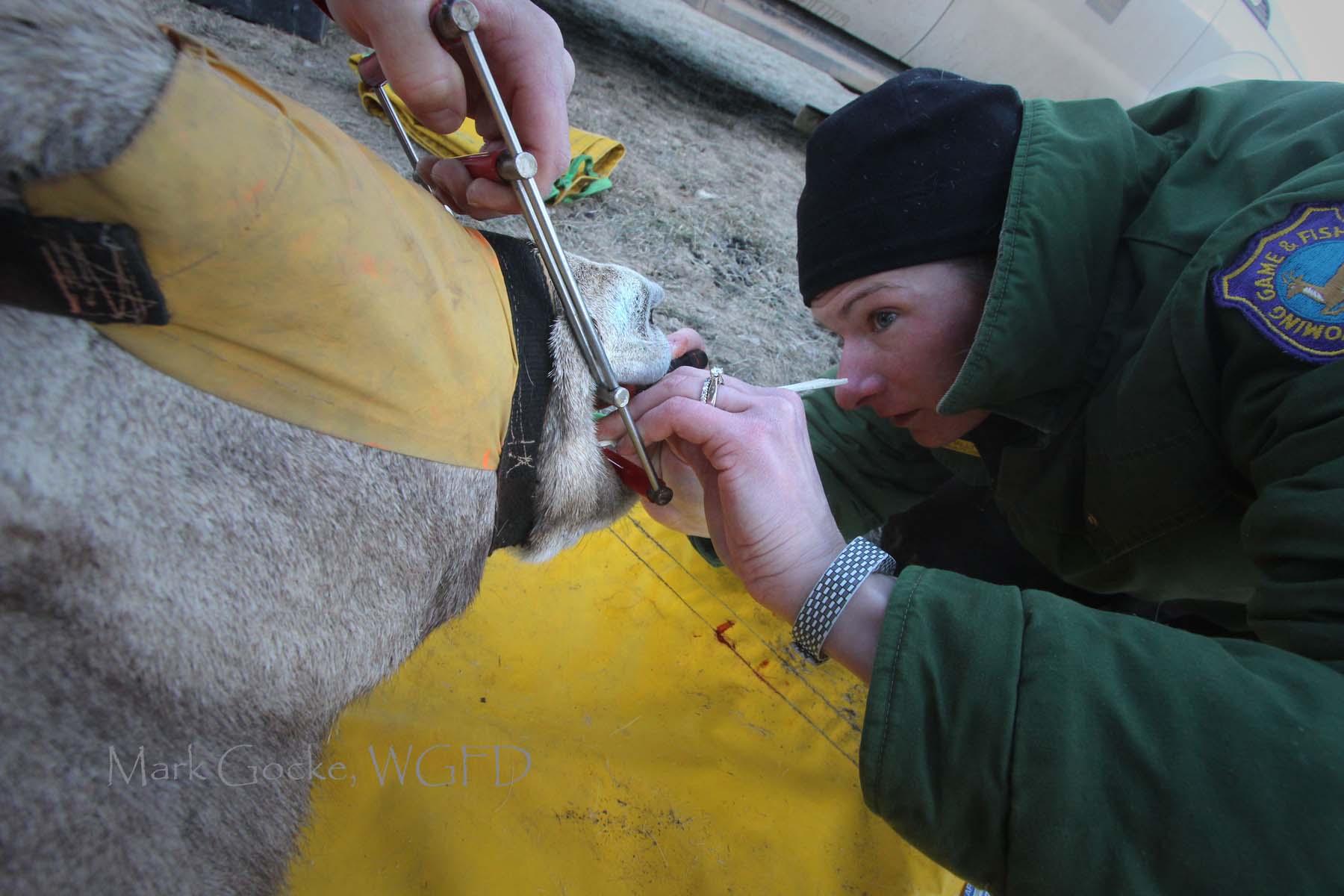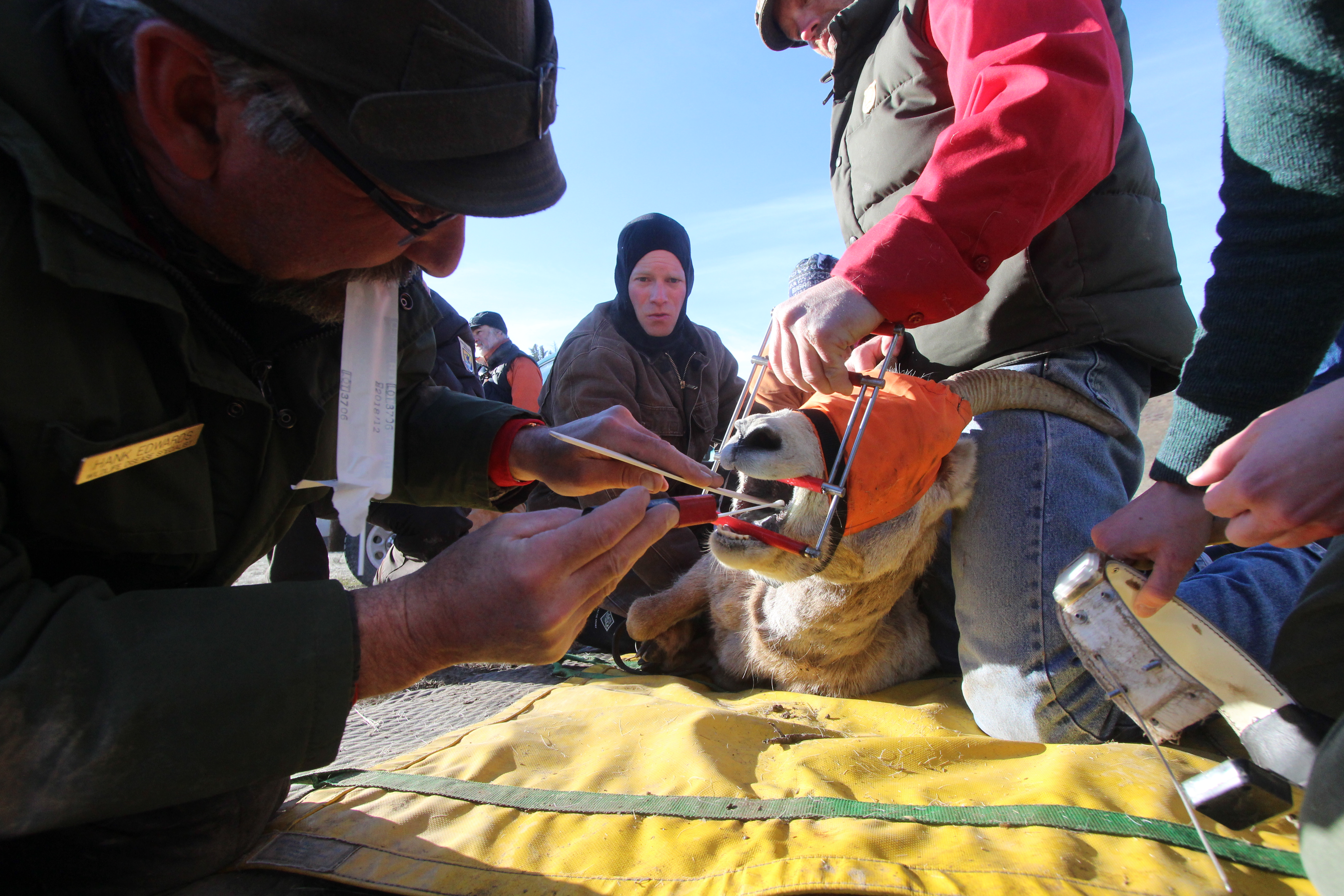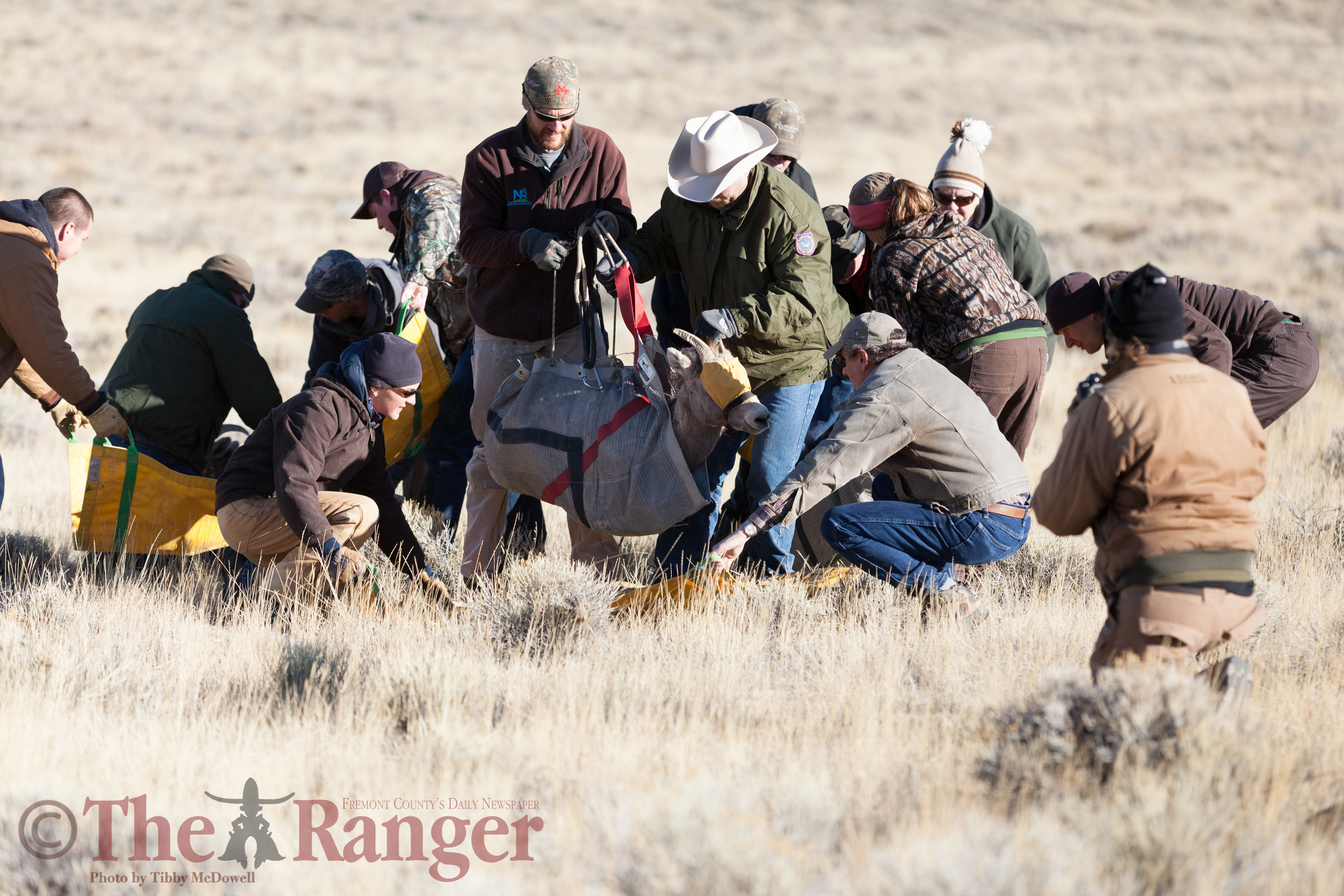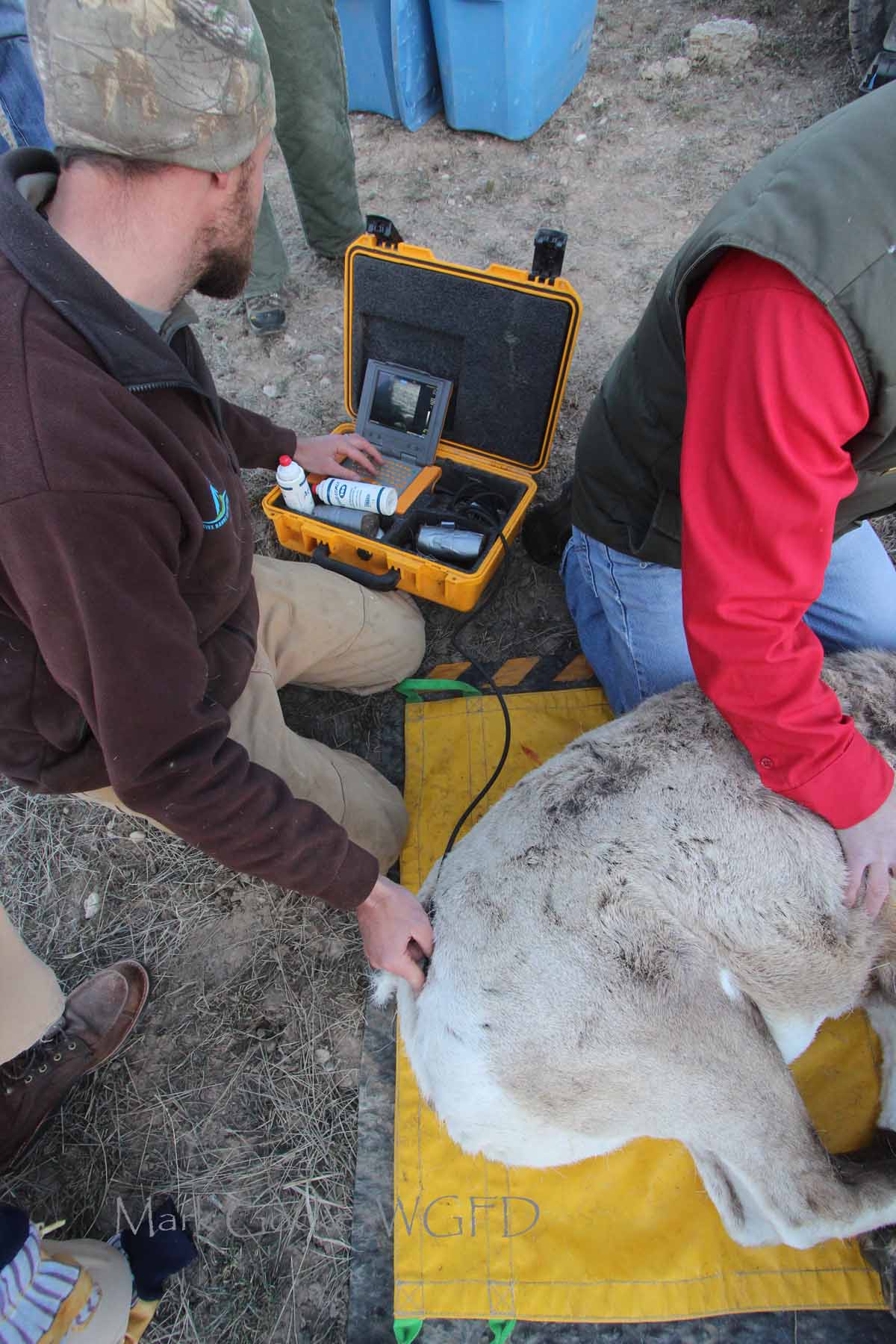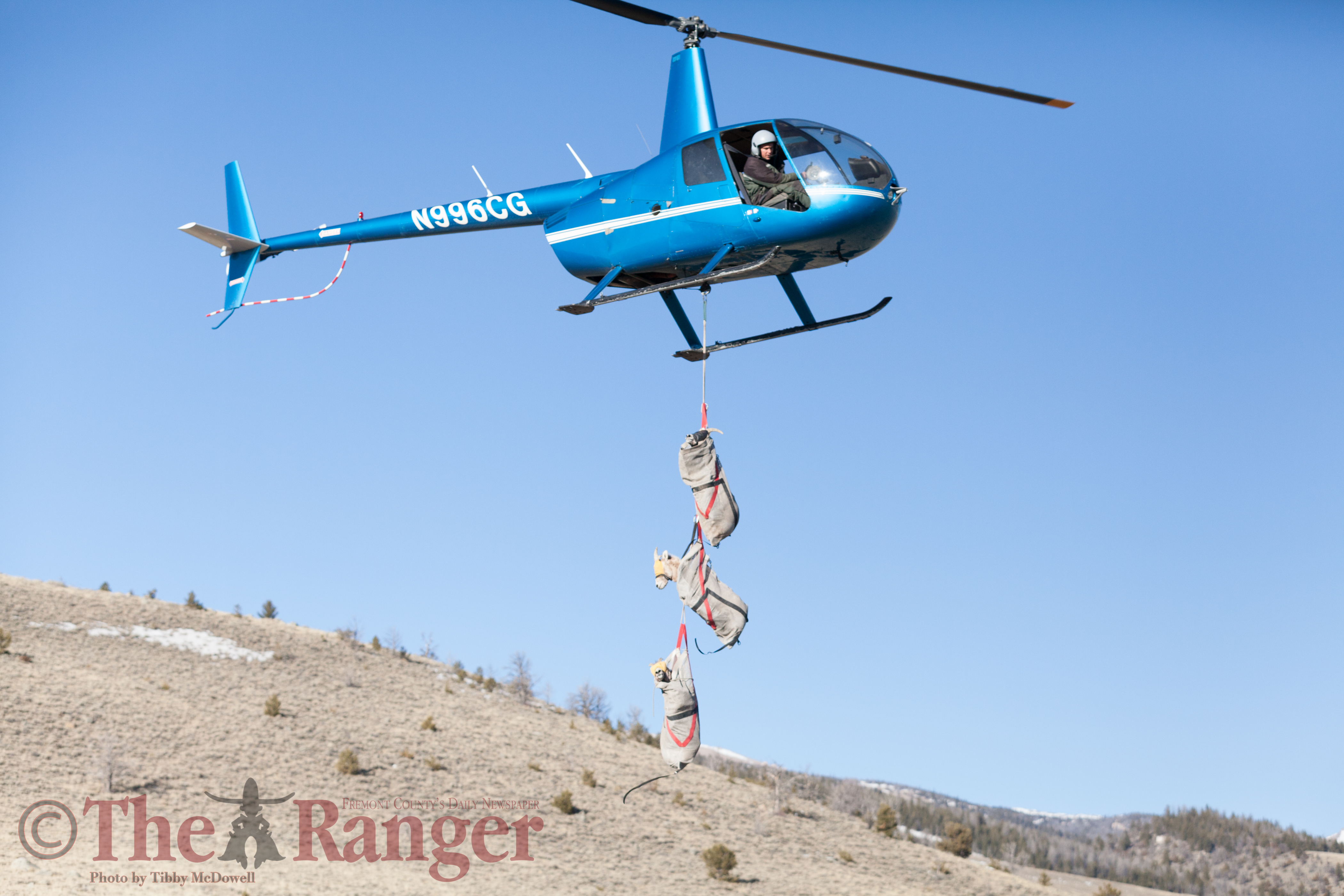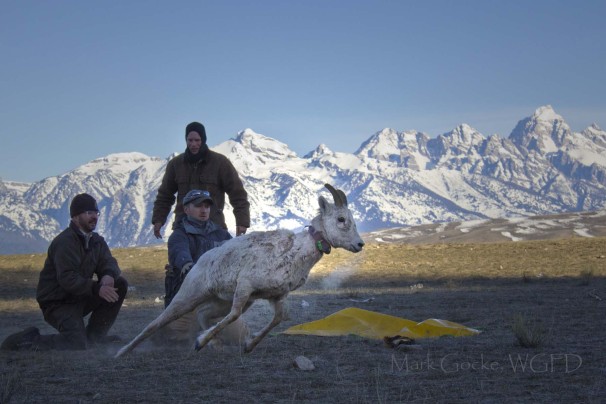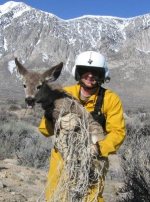T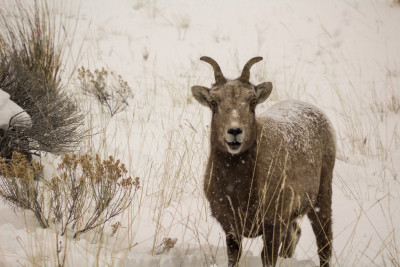 he entrance of epizootic pneumonia to bighorn sheep populations muddles the already complicated processes underlying population dynamics, and is often the culprit for massive population crashes of sheep populations. Indeed, pneumonia in bighorn sheep continues to be one of the most poorly understood diseases that threaten wildlife in North America.
he entrance of epizootic pneumonia to bighorn sheep populations muddles the already complicated processes underlying population dynamics, and is often the culprit for massive population crashes of sheep populations. Indeed, pneumonia in bighorn sheep continues to be one of the most poorly understood diseases that threaten wildlife in North America.
Bighorn sheep populations often exhibit sporadic fluctuations in abundance with periods of rapid growth followed by massive declines. Although epizootic pneumonia caused by bacterial respiratory pathogens are known to be the underlying driver of the massive mortality events, the frequency and intensity of the dieoffs are inconsistent and infections are not always manifested in disease. Therefore, dieoffs may well depend upon certain ecological or environmental conditions—the understanding of which could yield management alternatives to help reduce the frequency of epizootics and dampen fluctuations in abundance. Consequently, unraveling the interaction among density, nutrition, and disease are important to understanding population dynamics in bighorn sheep populations. Chronically infected animals continue to persist and appear to develop some level of immunity against pneumonia. Furthermore, pneumonia-induced dieoffs tend to occur at or near peaks in population size, suggesting density-related competition for food or social interactions may play a role in dieoffs. As density of a population increases, declines in food availability lead to reductions in nutritional condition (% body fat), which may in turn affect immune function and susceptibility to pneumonia. In Wyoming, many bacterial pathogens have been documented in herds across the state, some of which continue to thrive despite being infected .
Starting in March 2015, the Haub School of Environment and Natural Resources, Wyoming Cooperative Fish and Wildlife Research Unit, and the Wyoming Game and Fish Department, in collaboration with the US Fish and Wildlife Service, the Shoshone and Arapaho Tribes of the Wind River Indian Reservation, and the National Elk Refuge captured adult female bighorn sheep in the Jackson, Cody, and Whiskey herds of northwest Wyoming. Each December and March thereafter, our objective has been to recapture those same adult females to monitor how their recruitment status, disease status, nutritional condition and reproduction status varies seasonally. Adult females are captured via helicopter netgunning (Jackson and Whiskey herds) and ground darting (Cody herd). Each subsequent winter and spring, we have attempted to recapture those females.
Our goal is to begin to explore the interface between density, nutritional condition, individual survival and reproduction, and disease susceptibility to better understand how herd density, nutrition, and harvest management interact with pneumonia, and seek alternatives for helping manage the disease. Rather than simply monitoring a population through time, we are striving to unravel mechanisms by monitoring individual females through time. We are assessing nutritional condition, pneumonia infection, and linking those data to reproductive performance, survival, and nutritional condition in subsequent seasons. At a minimum, we hope to begin to shed light on the complex interactions in the population dynamics of bighorn sheep and help identify possible management alternatives to reduce probability of pneumonia dieoffs. In addition, this study will yield insight into the ever-complicated relationships between disease, density, and population performance of bighorn sheep populations across western North America.
Although efforts are still underway to process and analyze current data, a few meaningful and yet, intriguing patterns have emerged. Through the longitudinal study design, which includes recaptures in both winter and spring, we have identified potential differences in the seasonal ranges of the three herds. The Dubois herd appears to be nutritionally limited on their summer ranges, while experiencing adequate winter conditions. Conversely, the Jackson herd appears to have robust summer ranges, but experience poorer conditions when on winter ranges than the Dubois herd. Finally, the Cody winter and summer ranges appear to fall somewhere in between those in Dubois and Jackson.
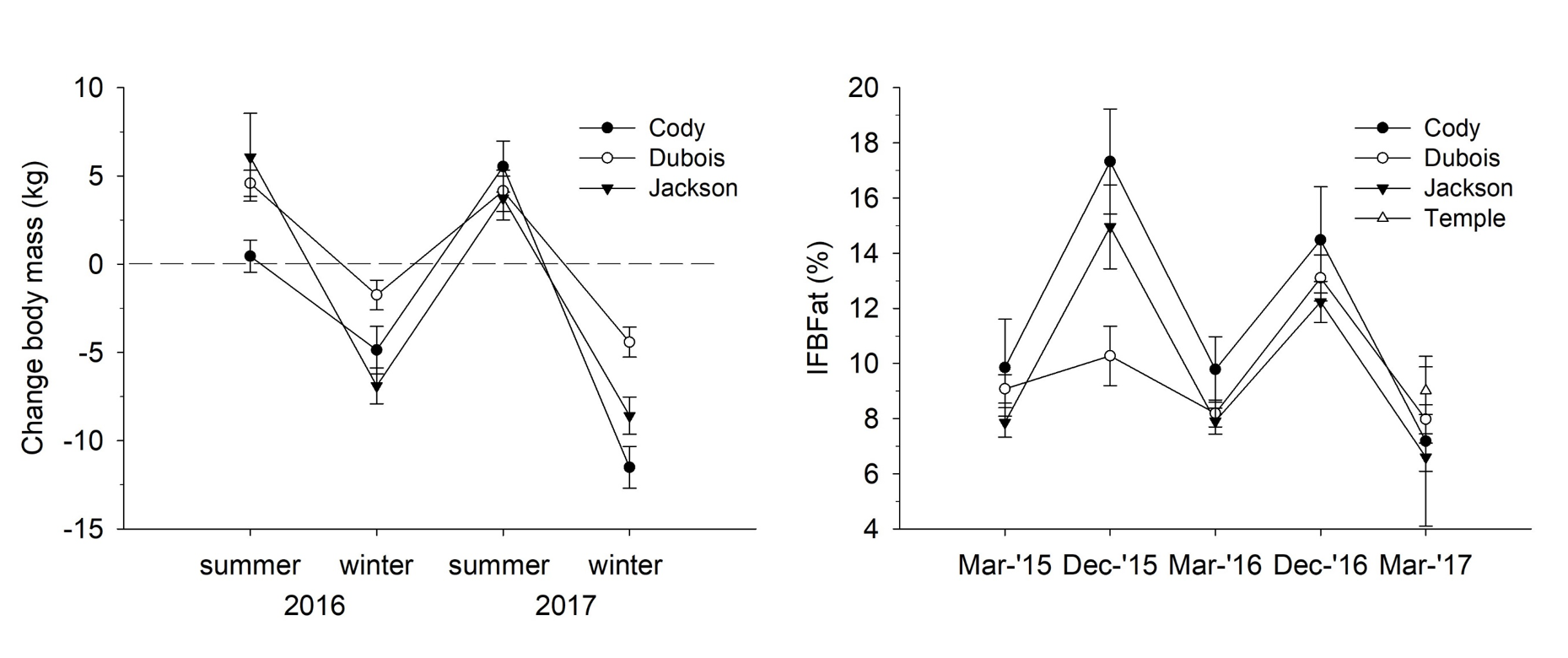
Change in body mass (%±SE) of adult female bighorn sheep between summer and winter in 2016 and 2017 and change in Ingesta-free body fat (%±SE) of adult female bighorn sheep from March 2015 to March 2017 in the Cody, Dubois, Jackson and Temple Peak herds.
The differences between seasonal ranges may be especially important in Dubois, where summer ranges appear to be lacking in nutritional quality and potentially influencing recruitment of offspring, despite a relatively high and constant rate of pregnancy. In 2016, recruitment in the Dubois herd was surprisingly low and the costs of lactation (when females did successfully recruit young) was much higher in Dubois than in the other two ranges, providing further evidence that there are differences in the summer ranges among the three populations that influence performance and the condition that a female enters winter in.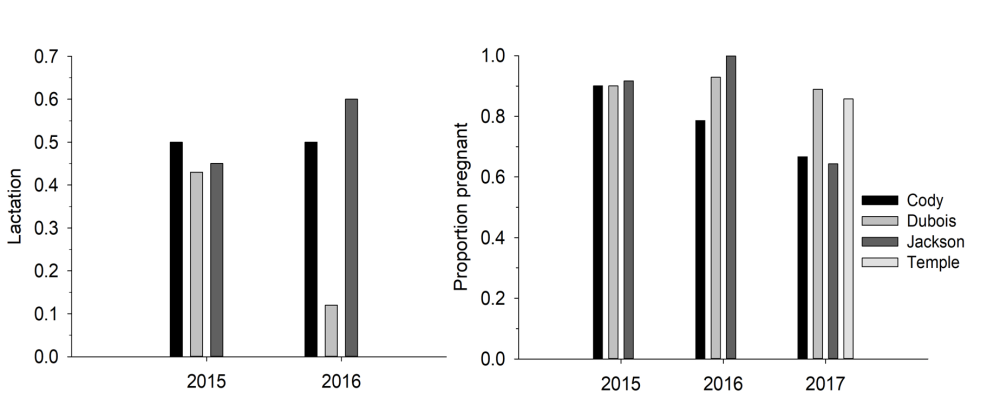
Proportion of adult female bighorn sheep that were lactating in December 2015 and 2016 and proportion of adult female bighorn sheep that were pregnant in 2015, 2016, and 2017 in the Cody, Dubois, Jackson, and Temple Peak herds of northwest Wyoming.
Piecing together how nutrition, disease, and other vital rates of populations interact to influence the overall health and success of a herd is paramount in effective management of bighorn sheep populations. Our work thus far has demonstrated that nutrition is an important part of the equation when attempting to understand how population characteristics influence crashes and recoveries of bighorn sheep populations and may play one of the most important roles in regulating populations of bighorn sheep.
Gallery
Reports & Publications
Contact
Kevin Monteith
Assistant Professor
Haub School of Environment and Natural Resources
Wyoming Cooperative Fish and Wildlife Research Unit
University of Wyoming, Dept 3166
1000 E. University Ave.
Laramie, WY 82071
Email: [email protected]
Doug McWhirter
Wildlife Biologist
Wyoming Game and Fish Department.
Cody, WY
Email: [email protected]
Greg Anderson
Wildlife Biologist
Wyoming Game and Fish Department.
Lander, WY
Email: [email protected]
Aly Courtemanch
Wildlife Biologist
Wyoming Game and Fish Department.
Jackson, WY
Email: [email protected]
Hank Edwards
Wildlife Disease Supervisor
Wyoming Game and Fish Department.
Laramie, WY
Email: [email protected]
Matthew Hayes
PhD Student
Wyoming Cooperative Fish and Wildlife Research Unit
University of Wyoming, Dept 3166
1000 E. University Ave.
Laramie, WY 82071
Email: [email protected]
Project Lead
Kevin is an Assistant Professor with the Haub School of Environment and Natural Resources and the Wyoming Cooperative Fish and Wildlife Research Unit in the Department of Zoology and Physiology.
Timeline
This March 2015 capture marked the beginning of what we hope to be a long-term research project to explore the disease-nutrition interface in bighorn sheep, and to develop an understanding of the range limits (i.e., nutritional carrying capacity) of our sheep populations in northwest Wyoming. Future work will include annual assessment of reproductive success of marked females, continued monitoring of survival, and subsequent recaptures of radiocollared females during mid-December and mid-March to assess their nutritional status and presence of respiratory pathogens following summer and winter each year. With time, we will begin to piece together each female’s history to describe how she interacts with her environment, understand her success to survive and reproduce or lack thereof, and how she fits within the population in which she resides. By piecing together the histories of each female we monitor, we hope to add an important piece to the puzzle of the complex interactions of environment, disease, and dynamics of our cherished bighorn sheep populations. Although there is still much work to do, and much more support needed to accomplish these goals, we are grateful for the funding and logistical support to date that has made the initiation of this project possible.
Funding & Partners
This project would not be possible without the financial and logistical support of our research partners. Funding has been provided by the Wyoming Wildlife/Livestock Disease Research Partnership and the Wyoming Governor’s Big Game License Coalition. We thank the Shoshone and Arapaho tribes for access to lands on the Wind River Indian Reservation, and to the US Fish and Wildlife Service for access to the National Elk Refuge for capture and research. This project is being led in close collaboration among the Wyoming Cooperative Fish and Wildlife Research Unit, Wyoming Game and Fish Department, and the Wyoming Game and Fish Department Wildlife Disease Laboratory.


